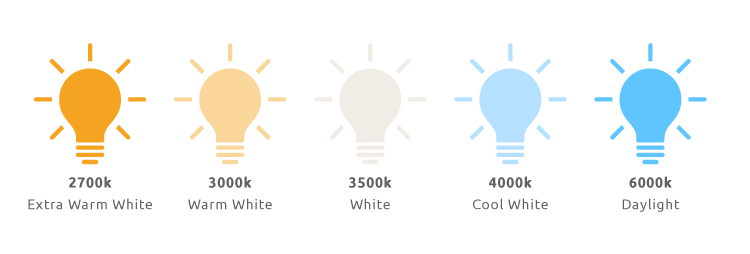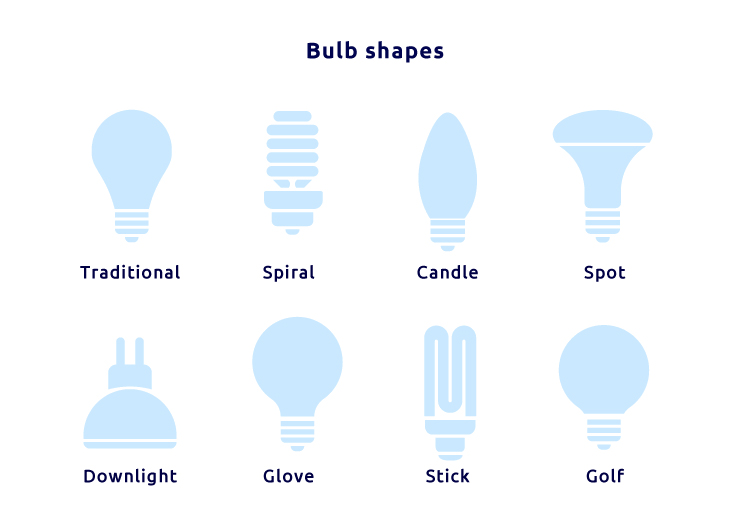These days there are so many lighting choices at our local supermarket or hardware store, it can be difficult to know where to start. Fortunately, we’ve got you covered with our complete guide to choosing the right energy saving light bulb for your home…
What is an Energy Saving Light Bulb?
Energy saving light bulbs are an efficient alternative to the traditional incandescent bulbs, which are now being phased out. They can last between 10 and 25 times as long by using far less electricity to produce the same amount of light.
By doing something as simple as replacing your traditional bulbs with energy saving light bulbs, you could save $100+ per year off your electricity bill while reducing your carbon footprint.
Finding the Right Energy Saving Light Bulbs
Trying to figure out which bulbs to buy for your home can be challenging, as not all energy saving light bulbs are the same – some will last longer, while others may shine brighter. Before going to your local supermarket or hardware store, there are several points you should consider first…
1. Which is the right fitting for the light you are trying to replace?

An easy mistake to make is not checking the bulb fittings needed for the various light fixtures in your home.
There are countless fittings to choose from, so you can use the image above to match the bulbs you are trying to replace, noting down the fitting reference number.
Also, if you’re able to take your old light bulb to the store with you, you can compare models directly.
2. What type of energy saving light bulb – CFL or LED?
There are two main types of energy-efficient light bulbs currently on the market. These are:
-
Compact fluorescent lamps (CFLs)
-
Light-emitting diodes (LEDs)
CFLs work by passing an electric current through a tube containing argon and mercury, while LEDs produce light by sending the electric current through a semiconductor material.
To help decide which is best for you, here is a list of pros and cons for each type:
CFL Light Bulbs
Cons:
- Typically take a few minutes to heat up and reach full brightness
- Contain mercury, a heavy metal that is not easy to dispose of
- Unable to be used with a dimmer switch
- Sensitive to cold temperatures
Pros:
- Consume less energy than traditional incandescent bulbs
- Less expensive than LED light bulbs
- Generate very bright light in an even spread
- Available in soft, warm, and bright whites
LED Light Bulbs
Cons:
- Better for producing directional light, which may not spread as evenly as CFL or incandescent bulbs
- Light output decreases gradually over the bulb’s life span
- Currently cost more than CFLs
Pros:
- Reach full brightness immediately, similar to traditional incandescent bulbs
- Can last up to three times longer than CFLs
- More durable in cold temperatures
- Do not contain mercury or any other hazardous materials
- Some LED bulbs can be used with a dimmer switch
- Available in soft, warm, and bright white hues
3. How bright should it be?

Now you know your fitting and the type of energy saving light bulb you’re after, the next thing you should consider is what sort of light and color you prefer.
Rather than thinking of brightness in “watts” with the older-style incandescent light bulb, we now need to think of brightness in “lumens” – where a higher number of lumens means a stronger light.
To help, use the image above to compare watt and lumen output for traditional incandescent bulbs and their energy-efficient equivalents.
For example, to replace an old 40W bedside table lamp, you would require an energy saving light bulb of at least 400 lumens, while the equivalent of a typical ceiling light at 60W would be 700 lumens.
4. Warm or cold light?

The color of light is measured on something called the ‘Kelvin Scale,’ which is often referred to as the light “temperature” by manufacturers.
Energy saving light bulbs that are at the lower end of the scale give off a homely, yellowish glow, while bulbs with a higher number of “Kelvins” (light temperature) are brighter and can sometimes appear cold or blue.
Getting the right color of light can make all the difference to your general mood and well-being.
5. Which is the best light bulb shape?
Each of these different light bulb shapes in the image above provides a slightly different spread and angle of light, so you’ll want to choose the right shape that best fits your room or space.
For example, a “downlight” bulb works better in recessed lighting and kitchen lights, while a “candle” shaped light bulb may be better suited for a chandelier or wall sconce.
The “traditional” bulb shape is the most similar to the old incandescent light bulbs and is ideal for most lamps and overhead lighting.
Ready to make the switch to energy saving light bulbs?


Edgar
February 18, 2021
Why does the chart in item #3 note 240V when typical household voltage is 120V?
Dave Futch
February 19, 2021
> Aloha Edgar, Thank you for writing in! This report was created in Europe and I’d agree that a column for 120 volts would be appropriate.
Clicking Here
March 26, 2022
Hello. remarkable job. I did not expect this. This is a splendid story. Thanks!
http://dot.boss.sk/o/rs.php?ssid=8&szid=23&dsid=1&dzid=4&deid=14639&url=http://m.shopinlasvegas.net/redirect.aspx3Furl=http://www.jfva.org/kaigi2017/yybbs/yybbs.cgi3Flist=thread